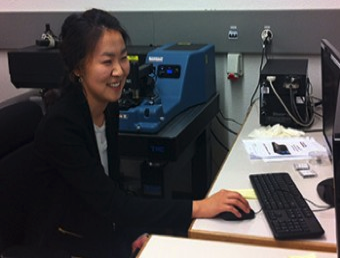Members Login

Channels
Special Offers & Promotions
EPFL Scientists Use Nanoscale IR Sectroscopy to Demonstrate ? to ? Secondary Structure Transition Associated with Amyloid Formation
Anasys Instruments reports on EPFL’s latest research on lysozyme droplets and α-synuclein macromolecular aggregates illustrating application of the nanoscale AFM-IR technique to demonstrate α to β secondary structure transition associated with amyloid formation.
 Proteins aggregating into amyloid structures are involved in important neurodegenerative disorders such as Alzheimer’s and Parkinson’s disease. During aggregation, initially monomeric proteins undergo internal structural rearrangement forming amyloid fibrils with a universal cross β -sheet quaternary structure. During fibrillation, several coexisting amyloidogenic species are formed and the study of these species would allow improved understanding of the pathways of amyloid formation.
Proteins aggregating into amyloid structures are involved in important neurodegenerative disorders such as Alzheimer’s and Parkinson’s disease. During aggregation, initially monomeric proteins undergo internal structural rearrangement forming amyloid fibrils with a universal cross β -sheet quaternary structure. During fibrillation, several coexisting amyloidogenic species are formed and the study of these species would allow improved understanding of the pathways of amyloid formation.
Conventional FTIR spectroscopy is a key method for studying the structural conversion during amyloid formation but it is only able to give average spectra of a heterogeneous solution due to its poor spatial resolution. Sub-micron chemical characterization, enabled by the AFM-IR technique, of amyloidogenic structures such as oligomers and fibrils is central to understanding how proteins misfold and aggregate. The researchers clearly resolved the shift in the amide I band which identifies an α to β secondary structure transition associated with amyloid formation and were able to spatially map the transition. This work was published in the journal Lab on a Chip [1].
The analytical system used for this research is the nanoIR product manufactured by Anasys Instruments. Andrzej Kulik, the main researcher behind this effort at EPFL, has described AFM-IR as “one of the most important breakthroughs in the AFM technique since it adds chemical composition information to nanoscale morphology. Its ease of use will ensure its wide adoption given the crucial importance of nanoscale chemical composition in most research applications.”
more news from anasys instruments
Media Partners


